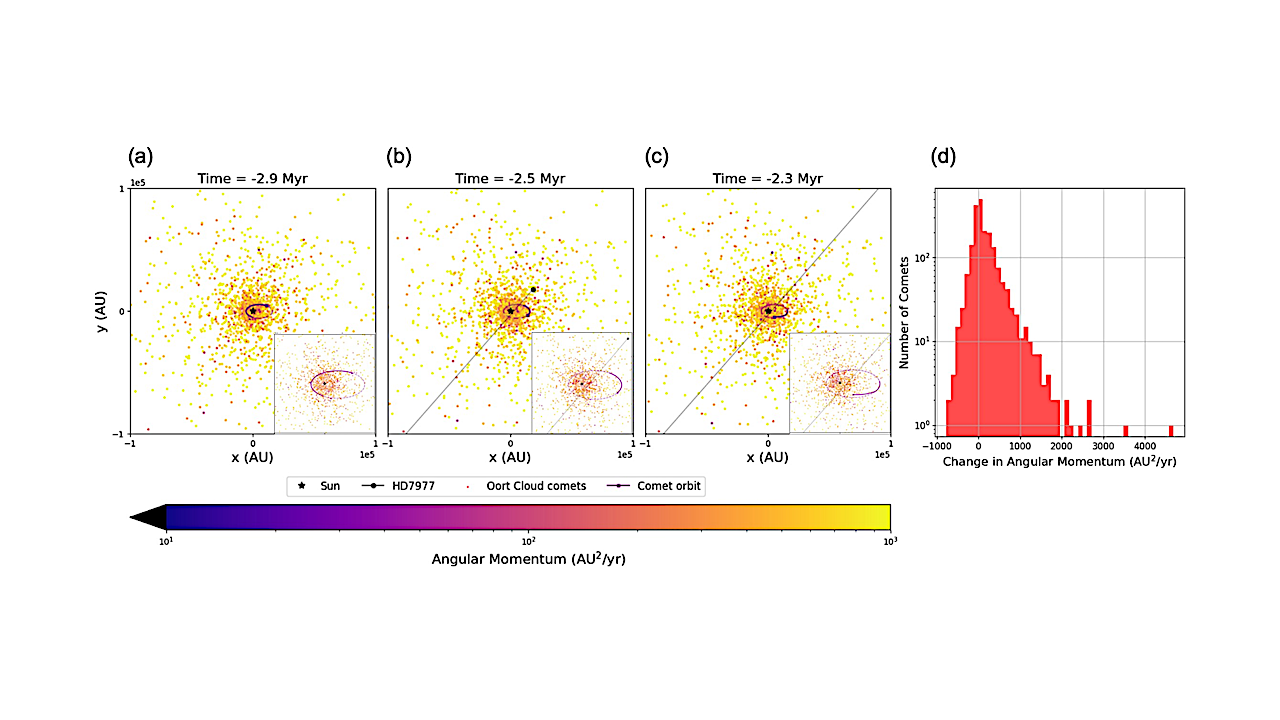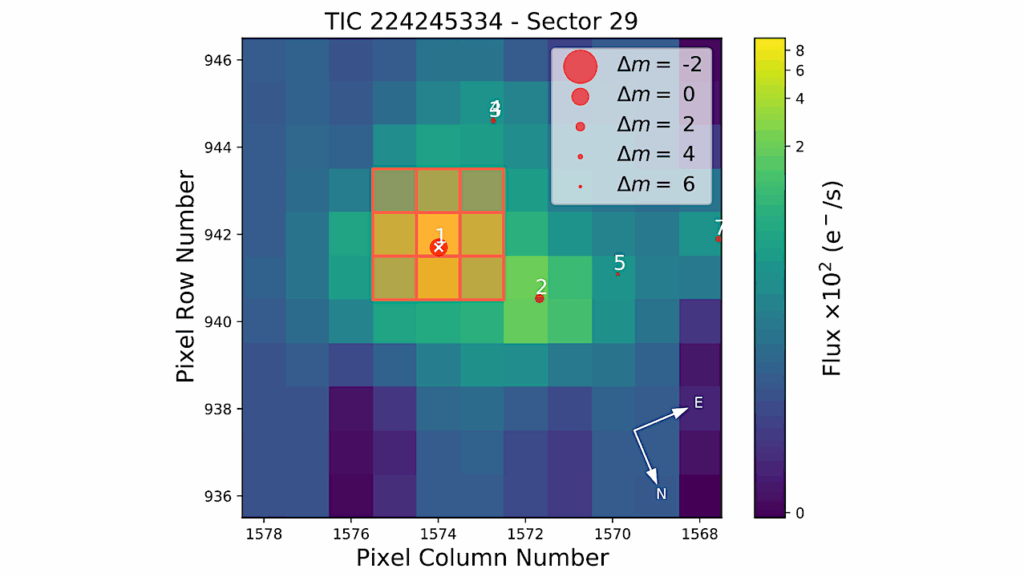On The Coincidence Between The Close Passage Of HD7977 And The Pliocene-Pleistocene Transition

The Oort Cloud’s dynamical evolution is significantly influenced by both the galactic tide and stellar flybys.
This study investigates the particular case of HD7977’s close encounter 2.47 Myr ago, which likely repopulated the Inner Oort Cloud and potentially triggered a significant comet shower on Earth. Our results demonstrate that the shower’s intensity strongly depends on HD7977’s impact parameter (b), with possible flyby distances ranging from 2,300 AU to ∼ 13,000 AU.
For the closest approach (b∼2,300 AU), the terrestrial impact probability of 1 km comets increases by an order of magnitude compared to the steady state, slightly exceeding the asteroid impact probability at this size scale.
We propose an analytical method to compute the probability of comet showers impacting Earth, which saves considerable computation time compared to N-body simulations. We identify a threshold diameter D0=2.25 km for which yields P=1 in our model, with D0 following a logarithmic dependence on b. These findings suggest that HD7977’s flyby may have caused an enhanced comet flux during the Pliocene-Pleistocene transition, which could plausibly be related to the environmental changes at this era.
Zhuoya Cao, Abraham Loeb, Morgan MacLeod
Comments: 15 pages, 4 figures, accepted by Scientific Reports
Subjects: Earth and Planetary Astrophysics (astro-ph.EP)
Cite as: arXiv:2511.11814 [astro-ph.EP] (or arXiv:2511.11814v1 [astro-ph.EP] for this version)
https://doi.org/10.48550/arXiv.2511.11814
Focus to learn more
Submission history
From: Zhuoya Cao
[v1] Fri, 14 Nov 2025 19:09:52 UTC (1,675 KB)
https://arxiv.org/abs/2511.11814
Astrobiology,








